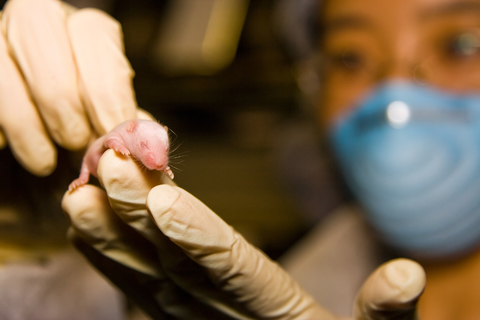Understanding the immunobiology of wild mammals

A team of British scientists, led by the University of Bristol, have made a significant step forward in understanding the immunobiology of wild mammals.
The state of the immune system of wild animals is almost unknown. However, knowing this and knowing what affects the immune state of wild animals is important in understanding how infection and disease affects wild animals. Knowing the immune state of wild animals is also important in understanding the biology of the germs or pathogens that infect them. This is also directly relevant when trying to understand how germs are passed from one species to another, including to humans.
The University of Bristol reports Professor Mark Viney from their School of Biological Sciences, and the lead author of the new research, published in PLoS Biology, said “Our lack of knowledge about wild animals’ immune state is in stark contrast to our exquisitely detailed understanding of the immunobiology of laboratory animals. Many factors, individually, have been shown to constrain or to promote immune responses. These factors include age, sex, infection status, and body condition. However, the extent to which these different factors actually affect how animals recognise and defend themselves against bacteria, viruses and other infections is relatively unknown.”
In the new study, a joint project with the London School of Hygiene and Tropical Medicine and the University of Edinburgh’s Roslin Institute, the team investigated the immune ecology of wild house mice, the same species as the laboratory mouse, as an example of a wild mammal, characterising their adaptive humoral, adaptive cellular and innate immune state.
They first found that neighbouring populations of wild mice, on different farms for example, were often in a very different immune state, the first time that this has been seen. Secondly, they identified the main factors that underlie the immunological differences among individual mice, showing that mice with good body condition had enhanced immune responses. In general, older mice had a poorer immune state but older animals also had better body condition, allowing them to partially resist the effects of their older age on their immune systems.
Mark Viney said “By applying a multifactorial analysis to an immune system-wide analysis, our results bring a new and unified understanding of the immunobiology of a wild mammal.”
Professor Eleanor Riley, senior co-author of the paper from the Roslin Institute, University of Edinburgh, said “Understanding which of many key drivers of the immune response are actually most important in allowing an individual animal to withstand infection is crucial to understanding how infections move among and between populations, how epidemics spread or can be contained, and how infections can jump species barriers to cause disease in new host populations.”








